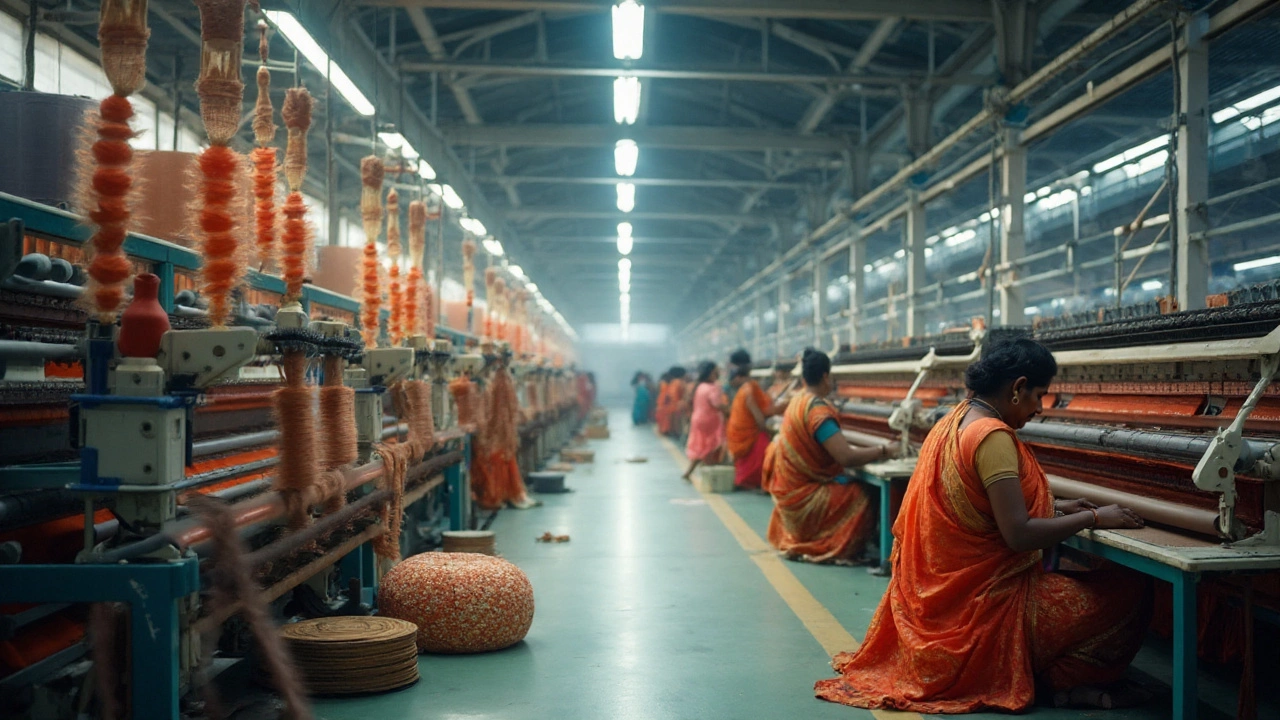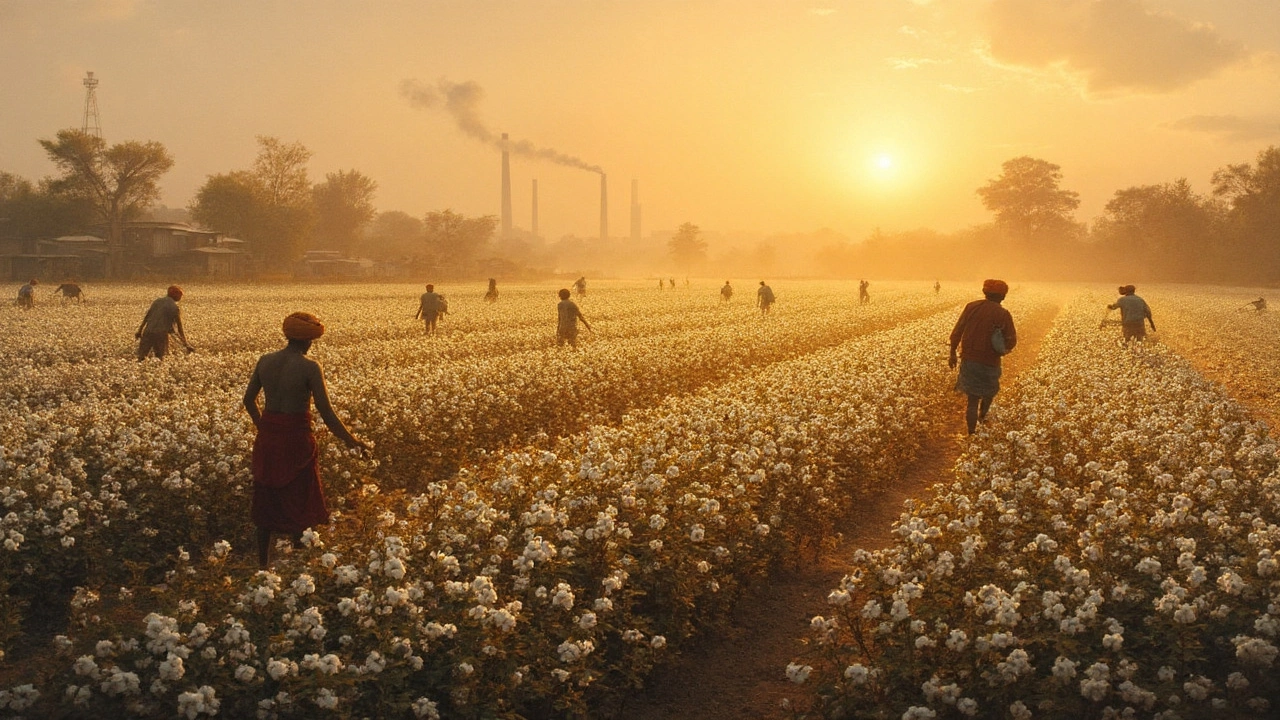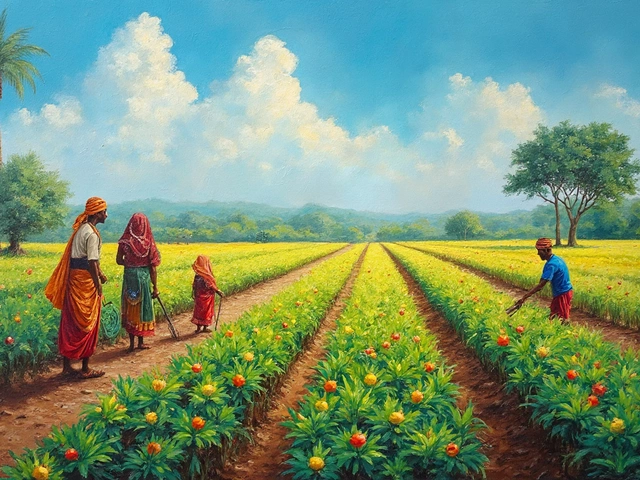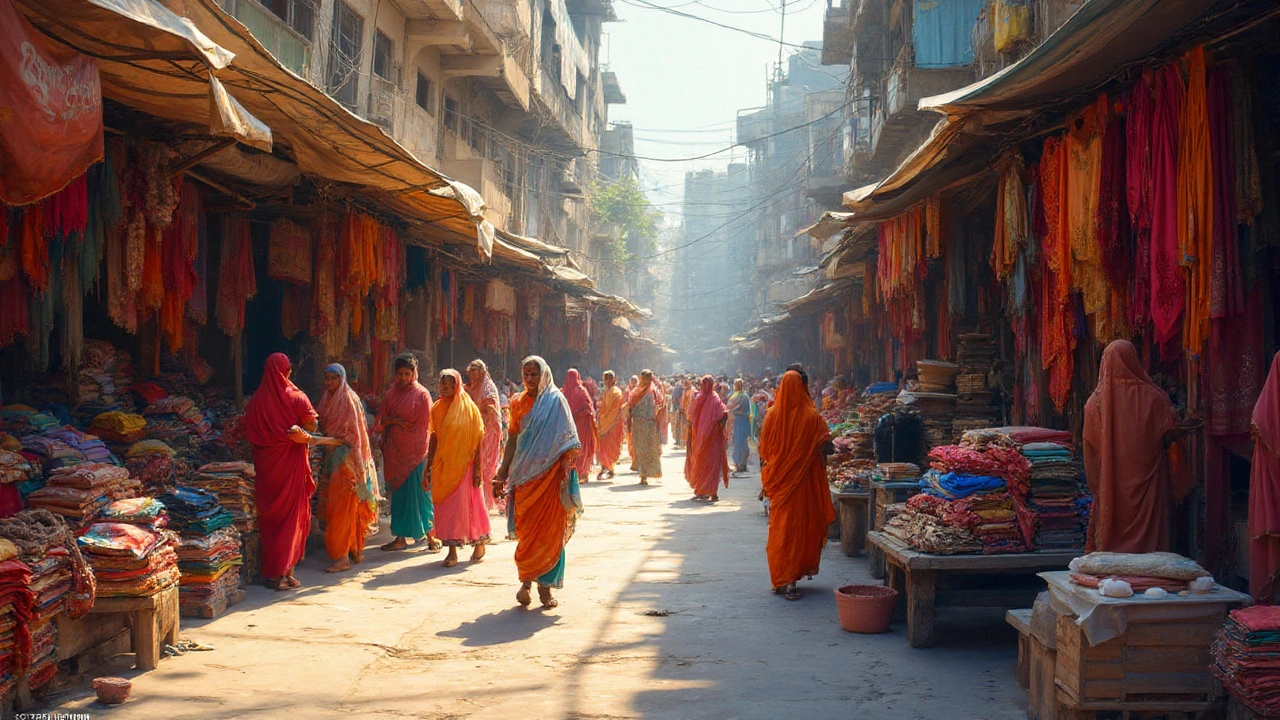Think of India’s textile industry and a kaleidoscope pops up—silks in Varanasi, cotton in Gujarat, Dhotis in Tamil Nadu, and colorful prints from Rajasthan. But here’s a question that divides textile veterans and industry newbies alike: which state is the actual textile hub of India? Ask anyone in the business and you’ll hear fierce arguments for Gujarat or Tamil Nadu, sometimes even Maharashtra. So, what’s the real story?
Let’s break it down, peel every layer, and talk numbers, traditions, and what’s happening on the factory floors, not just what’s flashing in government reports. We’re not just naming a king; we’re looking at how whole states breathe textiles, drawing from centuries-old techniques and driven by world-class factories today. And if you’re eyeing the textiles market for business, career, or old-fashioned curiosity, there’s a lot more going on than just powerlooms and spinning mills.
Gujarat: The Industrial Powerhouse of Indian Textiles
It’s hard to miss Gujarat when you start talking seriously about the Indian textile industry. The numbers say it all: Gujarat contributes over 35% of India’s total cotton production. The city of Surat alone is responsible for about 40% of India’s man-made fabric production and a whopping 30% of the country’s total export of textiles and apparel. This place isn’t just about scale—it’s about total dominance.
Walk through Surat’s textile markets and you will see rows and rows of glittering sarees, synthetic blends, and high-tech looms spinning out fabric at breakneck speed. The state is home to more than 1500 large textile units and supports hundreds of thousands of small weaving sheds and dyeing works. And let’s not forget, Gujarat has become a magnet for investment—major international brands source from factories in Ahmedabad and its tech parks. Garment parks here are as modern as anything you’d find in East Asia.
The ecosystem is tight: farmers growing cotton in Saurashtra, raw cotton heading to ginning units, then onto spinners, dyers, and weavers, all within 300 kilometers of each other. Logistics are simple here. Surat has the largest man-made fiber industry in India. With the state’s business-friendly policies—tax incentives, smooth land clearance, affordable power, and the Gujarat Textile Policy 2024 giving a clear roadmap for expansion, factories can set up and scale quickly. The recent policy, just to spell it out, offers capital subsidies up to 40% for new investments, and interests rate subsidies for new entrepreneurs.
People sometimes forget the legacy here. Ahmedabad was popularly called the "Manchester of India" well before independence, churning out fabrics for global markets. The state still hosts giants like Arvind Mills, Alok Industries, and Garden Silk Mills. On the export end, Gujarat sends fabrics to over 125 countries—South Africa, UAE, USA, and even to countries well-versed in textile wizardry like Turkey and Italy.
So, how is Gujarat innovating now? Eco-friendly processes are picking up steam. Waterless dyeing, use of recycled PET fibers, and solar-powered manufacturing plants are gaining popularity. Surat’s textile cluster even set up a zero-discharge treatment plant to curb pollution, a move that saved its exports from nearly getting blacklisted in Europe in 2023.
| Textile Statistics | Gujarat | Tamil Nadu | Maharashtra |
|---|---|---|---|
| Contribution to Indian Cotton Output | 35%+ | 6% | 9% |
| Spinning Mills | 190+ | 2000+ | 700+ |
| Major Textile Cities | Surat, Ahmedabad | Coimbatore, Tiruppur | Mumbai, Ichalkaranji |
| Major Exports (2023, in $B) | 11.9 | 8.7 | 6.2 |
Ask anyone with a stake in man-made fibers or technical textiles, and Gujarat is their first stop. The state is now investing big in technical textiles—special fabrics for industries like medical, agriculture, and even defense. In 2024, they rolled out new training programs for young job-seekers, so the next generation isn’t just spinning cotton but designing smart textiles too.

Tamil Nadu: The Spinning and Weaving Heart of the South
Now, before you jump to crown Gujarat, you need to see what’s happening in Tamil Nadu. If Gujarat is the engine room, Tamil Nadu is the heart—the place where raw cotton becomes that shirt you’re probably wearing.
The state boasts of around 2000 spinning mills, the largest concentration in one place not only in India, but Asia. Coimbatore is nicknamed "the Manchester of South India," and Tiruppur, just next door, is single-handedly responsible for 90% of India’s knitwear exports. We’re talking about more than $4 billion worth of t-shirts, kidswear, track pants, and sportswear shipped out to brands like H&M, Marks & Spencer, and Walmart every year. That’s not just tradition; that’s world domination in a niche.
Tamil Nadu is unique in another way—it is southern India’s employment machine. Over 6 million people in the state work in textiles and apparel businesses directly and indirectly. The climate is perfect for spinning mills—dry, not too hot. Mills in Dindigul, Karur, and Erode are famous for sheets, towels, and home textiles. The region has fostered a close-knit network of dyers, weavers, embroiderers, cotton traders, and logistics companies. Buyers from Europe, Japan, and Australia literally camp out in Tiruppur to source the latest designs.
Let’s dig into why things run so smoothly. Tamil culture values handcraft and social responsibility. Lots of companies here focus on fair wages, worker-led co-operatives, and green projects. Tiruppur’s Zero Liquid Discharge project is a shining example: after facing years of penalties for polluting the Noyyal River, the whole cluster banded together to recycle wastewater. Now, not only is the environment safer, but global buyers have stuck around for the long haul.
Here’s a fact you might not know: more women than men work in the textiles industry in Tamil Nadu. This means the sector lifts whole families out of poverty, and local self-help groups are booming thanks to income from weaving and tailoring.
Innovation keeps the region ahead. While Gujarat is busy making synthetic blends, Tamil Nadu manufacturers are quietly pushing ahead with organic cotton, sustainable dyes, and low-impact textiles. The state launched the Tamil Nadu Textile Policy 2023, which gives subsidies, skill upgrades, and pushes for digital manufacturing. Today, there are factories in Coimbatore run almost entirely by AI-driven management systems, where stocks, dye colors, and production speeds are tracked minute by minute. Some brands here have committed to carbon neutrality before 2030, giving western giants a run for their money.
- Textile hub of india—the phrase applies as much to spinning mills humming in Karur as it does to mega parks in Surat.
- Factories in Erode—often family-run—make half the bed linen used in India's hotels.
- Many Tamil Nadu designers have jumped into technical textiles, medical fabrics, and wearable smart-tech products, pulling global attention away from China and Bangladesh.
If you’re an entrepreneur, the reasons to pay attention to Tamil Nadu are many: stable infrastructure (steady power, less political drama), world class innovation labs, and multiple ports that ship to every major continent. Plus, there’s a pipeline of talent with engineering and design backgrounds, thanks to dozens of technical colleges partnered with industries.

The Battle of Hubs: Who Wears the Textile Crown?
So, we have two giants—Gujarat leading in scale, synthetics, and exports; Tamil Nadu with its spinning might, garment focus, and green edge. Some might mention Maharashtra, home to Mumbai’s legendary textile markets and the denim clusters of Ichalkaranji. But in 2025, it’s Gujarat and Tamil Nadu neck and neck atop the throne.
Here’s what sets them apart—and keeps the title up for grabs. Gujarat’s fabric output is massive, especially with man-made materials and cotton blends. But Tamil Nadu spins more yarn than almost anyone else in Asia. If you’re in the home textile business—towels, sheets, upholstery—Tamil Nadu is your zone. If you want value-added fabrics, fast shipments, and industrial scale, look to Gujarat.
Demand in both states has pushed new government support in 2025. Gujarat is now developing India’s biggest Textile Park outside Vadodara, set to open next year. Tamil Nadu has doubled funding for its worker upskilling program, attracting new investment from Japan. On the tech side, Surat’s factories are trialing blockchain for better supply chain tracking, while Tiruppur’s exporters are working with MIT on biodegradable fibers with RFID chips built in.
Another interesting twist—India’s domestic demand has exploded. Since the middle-class income boom in 2022, Indians are buying more apparel and home goods than ever. Urban centers from Delhi to Bangalore want quick, trendy, affordable clothes, putting pressure on both Gujarat and Tamil Nadu to keep up with fashion cycles and quality standards. As for exports, China’s supply-chain issues since COVID left Western buyers hunting for steady partners—and India stepped up, increasing textile exports by 22% in 2024 alone.
But it’s not all smooth sailing. Both hubs face worker shortages, rising raw cotton prices, and constant pressure to go clean and green. Environmental laws are getting stricter, and one slip-up can lead to export bans. Skilled labor is the next big hurdle—both states are throwing money into new training centers and partnerships with universities to keep young talent interested in the industry instead of tech jobs or gig work.
So, who is the real textile hub of India? Depends on who you ask. For sheer scale and export muscle, Gujarat grabs the headline. For skill, innovation, and the human touch, Tamil Nadu is unbeatable. The healthy rivalry’s actually good for the whole sector. Newcomers, startups, small makers, and big factories alike ride the wave of this friendly competition, forcing everyone to up their game.
If you’re planning to get into textiles—whether as a buyer, designer, or manufacturer—you’ll want to see what both states offer. Gujarat’s fabric parks are impressive, but Tamil Nadu’s garment clusters are legendary for a reason. Spend a week in Surat and the next in Tiruppur and you’ll see why India is the world’s textile epicenter right now. The race is on, and it’s not slowing down.





Write a comment